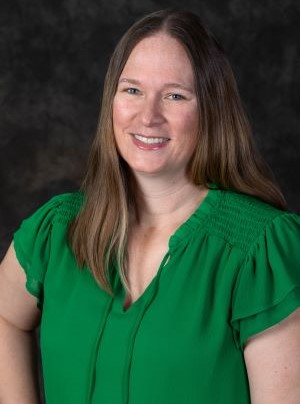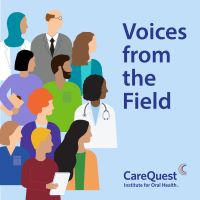Enter your email to receive the CareQuest newsletter:
January 23, 2024
As part of his role to advance the integration of oral health and overall health, CareQuest Institute Chief Health Equity Officer Kaz Rafia, DDS, MBA, MPH, is always trying to find exemplars. He seeks models and individuals that are focused on the community and on finding innovative ways to improve the system.

He’s looking for stories like Lisa Bozzetti, DDS, and Virginia Garcia Memorial Health Center.
“What I love about their work is how innovative and resourceful they are in providing not only integrated care, but care that is truly person-centered and community-driven,” Rafia says. “It’s an excellent example of what an equitable, accessible health care model should look like.”
Virginia Garcia Memorial Health Center (Virginia Garcia) is a Federally Qualified Health Center (FQHC) that provides comprehensive, culturally appropriate primary health care to the communities of Washington and Yamhill Counties. Their mission is caring for migrant and seasonal farmworkers and others with barriers to receiving health care.
Rafia recently interviewed Bozzetti, dental director at Virginia Garcia, to learn more about their work.
How does Virginia Garcia work to ensure that care is rooted in the local community?
I’ll share a couple of examples:
First, we support and operate patient councils facilitated by a patient engagement specialist. These groups of patients meet to share their experiences and are asked questions related to services. It ensures that we’re hearing their concerns and adapting our practices to reflect the needs of the community.
Second, recent workforce shortages also led us to invest heavily in the community, by supporting opportunities for staff, high school students, and community members to become dental assistants, medical assistants, and pharmacy technicians.
From offering workforce development training to providing resources during the pandemic, the health center continually works to break down systemic barriers and find innovative and creative ways to improve the community's health. That includes looking at oral health as part of overall health.

Medical-dental integration can encompass a lot of different things. Can you describe the level of integration between physical, behavioral, and oral health at Virginia Garcia?
The entire health center operates within the same electronic health record, allowing information to be shared across departments. Here are some specific examples of why this is so important, and how it’s put into practice:
- An appointment can be made for a primary care visit in the dental clinic.
- When a patient is seen in the dental clinic, overdue vaccines and overdue A1Cs (a blood test that measures a patient’s average blood sugar levels over the past three months) are noted and shared with the patient.
- Upon learning that 70% of patients with oropharyngeal cancers also test positive for the human papillomavirus (HPV), the dental team made it a priority to inform parents and patients about the HPV vaccine and began a pilot to administer the vaccine in the dental clinics.
- Since 2018, Virginia Garcia has embedded a dental hygienist in primary care, in the reproductive care clinic, incorporating oral health care into prenatal care.
It can be difficult to access the resources required to care for patients in an integrated way, especially as a FQHC. How has your organization been resourceful?
We are resourceful and creative because we have to be. But it shows that you can put these practices into place even with limited resources.
For example, just prior to the pandemic, a staff member discovered a deal on A1C blood testing equipment. They could be purchased for pennies as part of a promotion. The dental program had planned to start doing A1C tests but had not gone through the training yet. Thanks to some quick thinking, we purchased the A1C equipment and stored it for later use. Unfortunately, the pandemic got in the way of implementation, and we are now planning to implement A1C testing early next year.
That sounds like a creative solution. Any other examples you can share?
Just prior to the pandemic, we had to cut back on some of our services. We pulled our dental hygienists from our SBHC (school-based health center) clinics. To compensate for this, we relocated the dental chairs in several of the SBHC clinics, moving them to our dental clinics, and we salvaged one that could not be used in the existing dental clinics to save for a potential dental training lab. That chair was mounted on wheels and put into storage until three years later, when we hired a dental assistant trainer and were able to implement a dental training lab along with this trainer position.
What do you think has been a key to the success at Virginia Garcia?
I think a key to our success is how everyone is constantly looking for new ways that we can work better together across departments to better care for our patients.
The reproductive health clinic is a great example. The dental hygienist in that clinic has worked to become a part of the primary care team, learning new tasks to support the team and, in turn, help promote oral health care. For example, the dental hygienist noted that phlebotomy is greatly needed, and we are now exploring how the dental hygienist can learn this skill to further support the team onsite, in addition to being an integral liaison to the dental department. This clinic now has the highest percentage of patients who receive both dental and physical health care at Virginia Garcia, a testament to the effectiveness of this model.